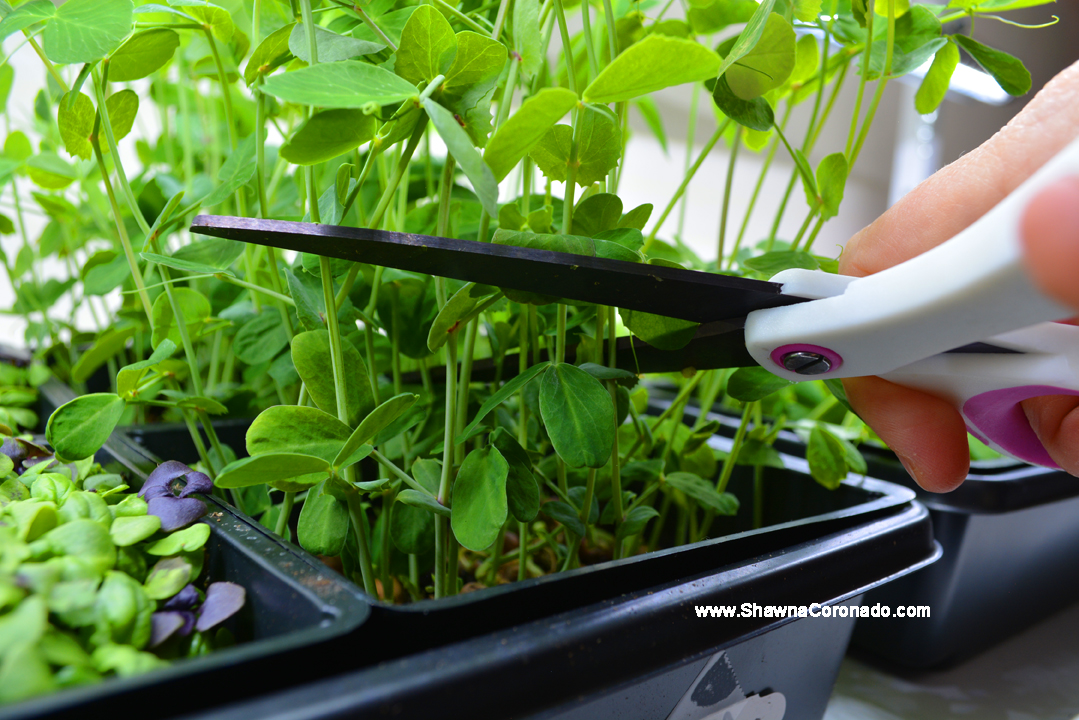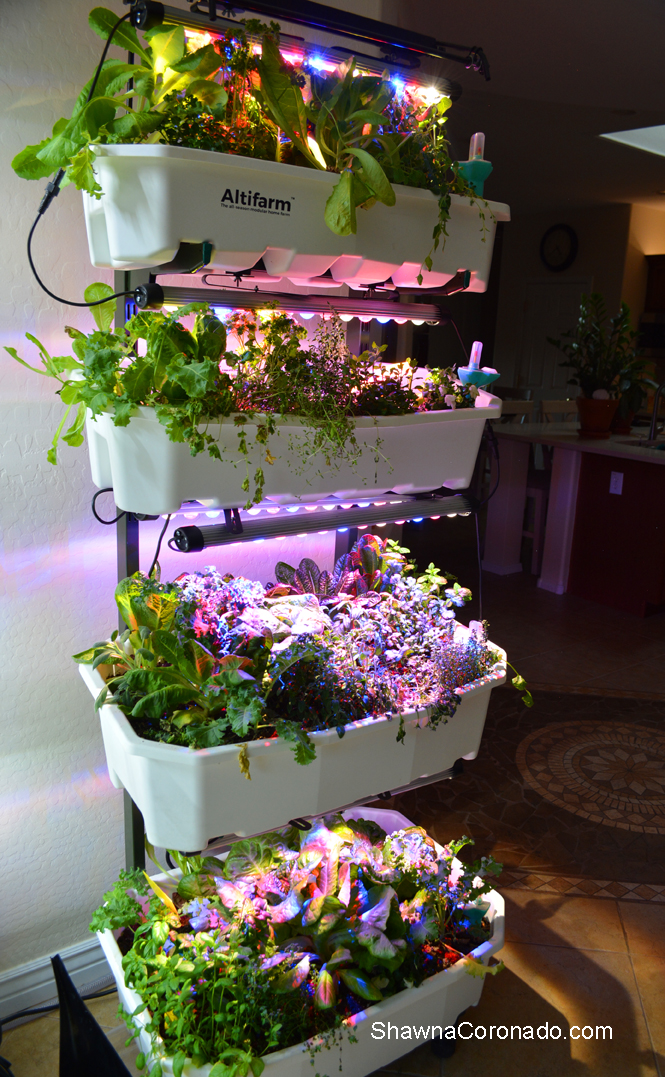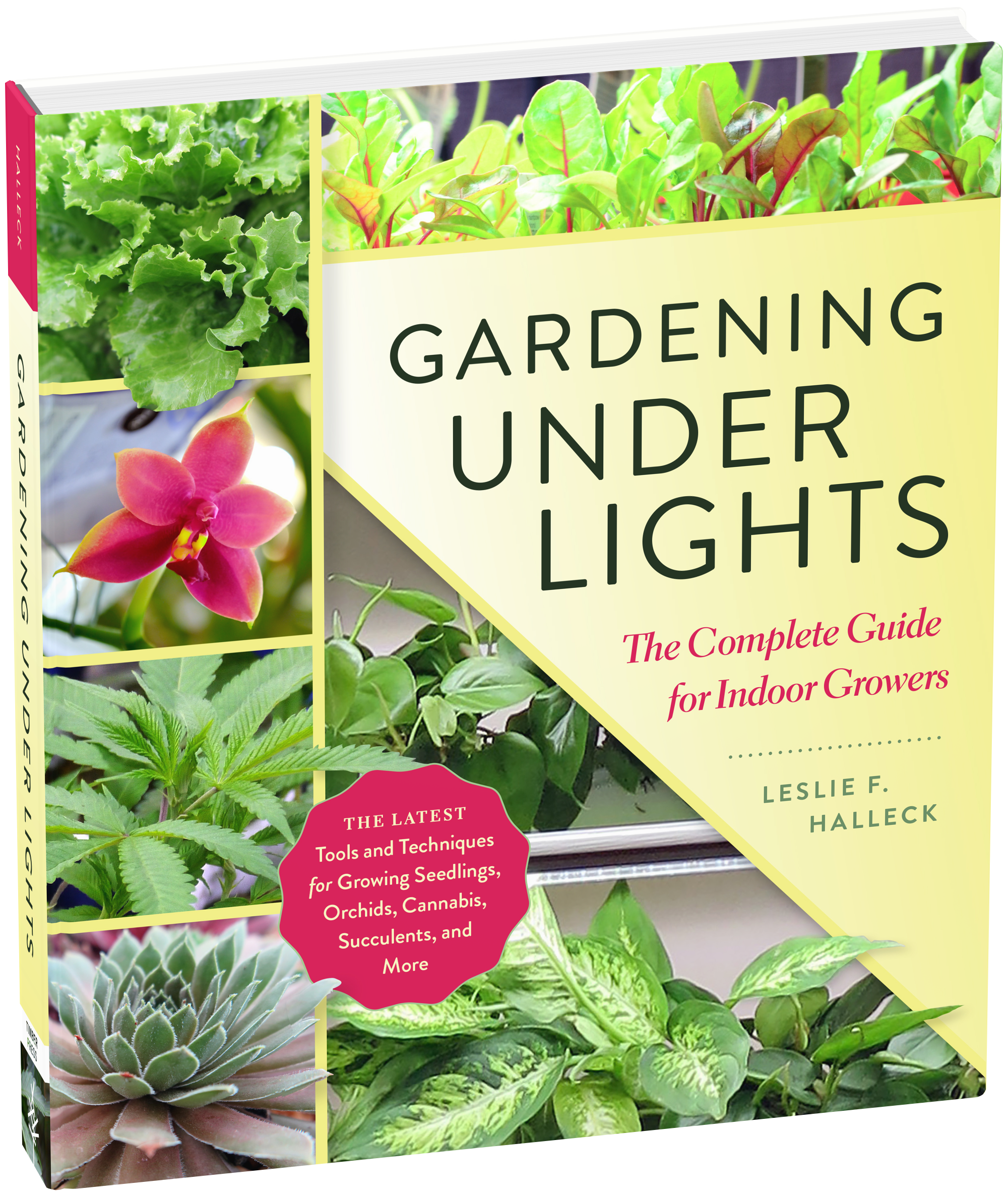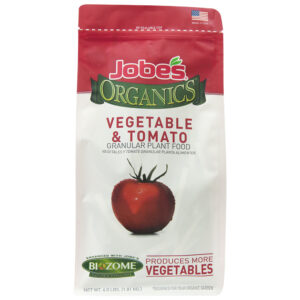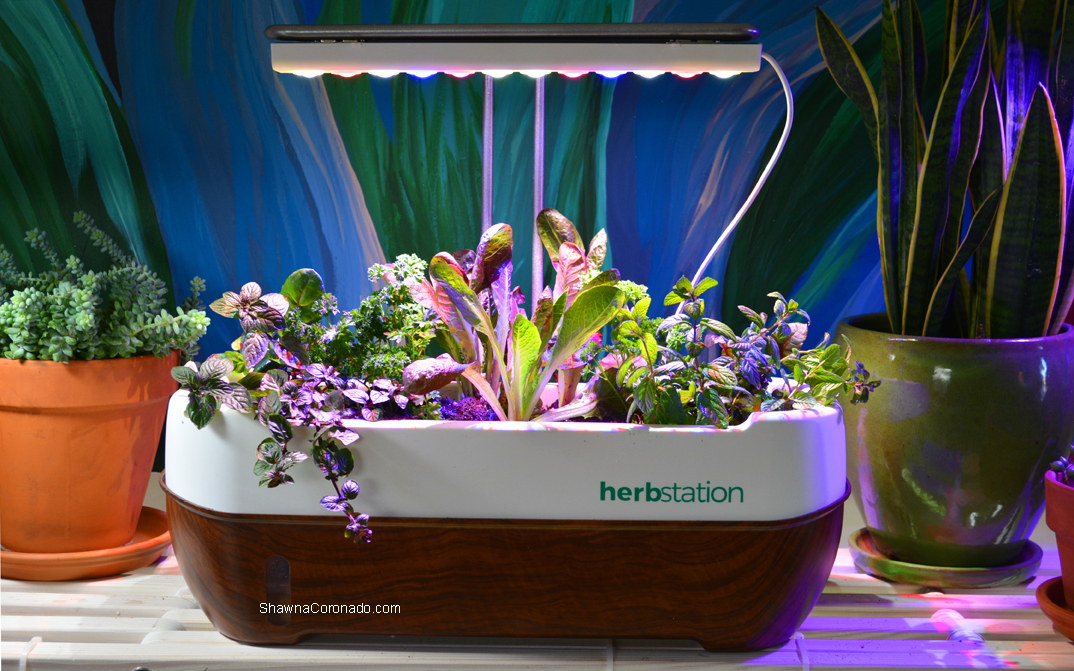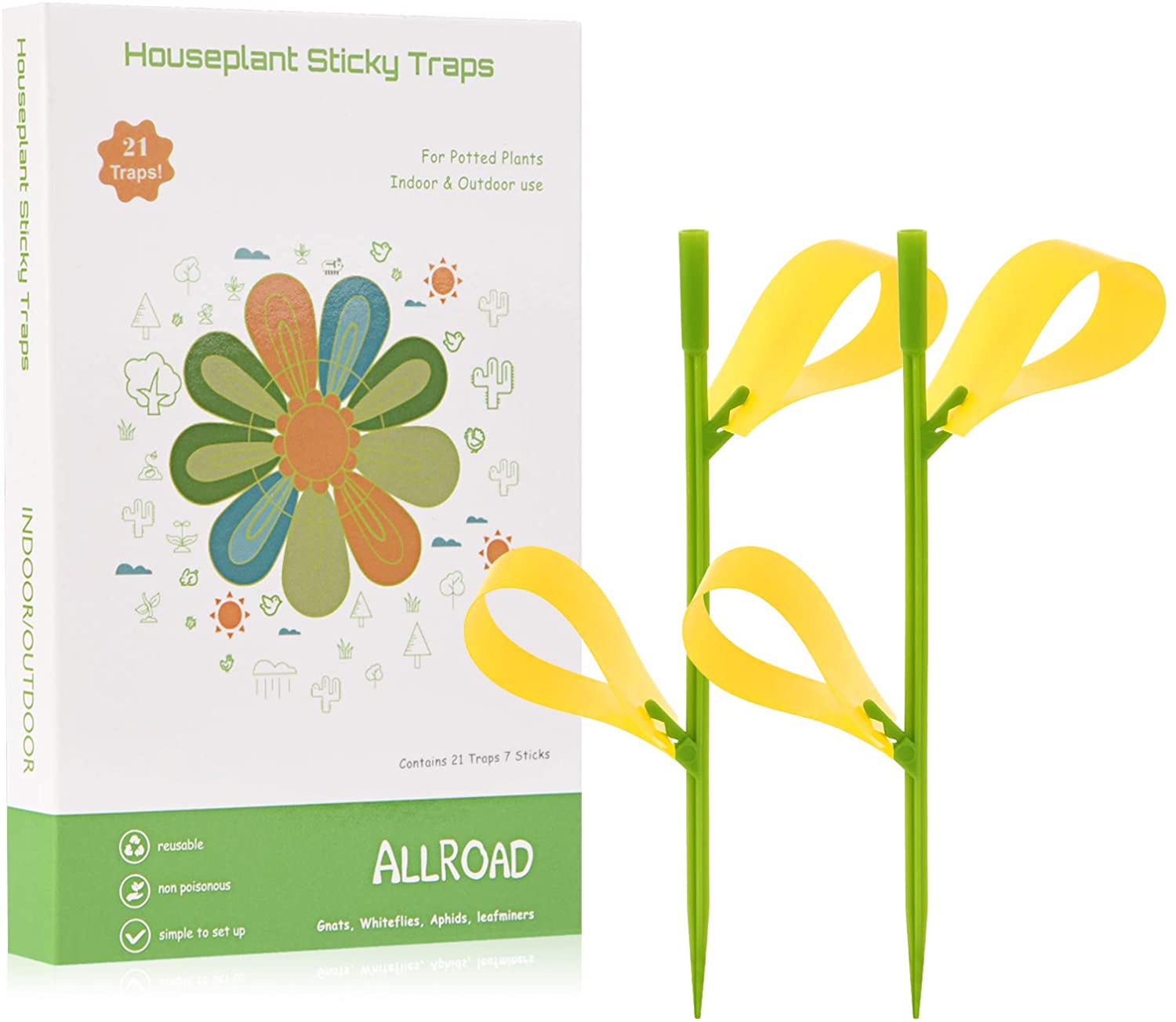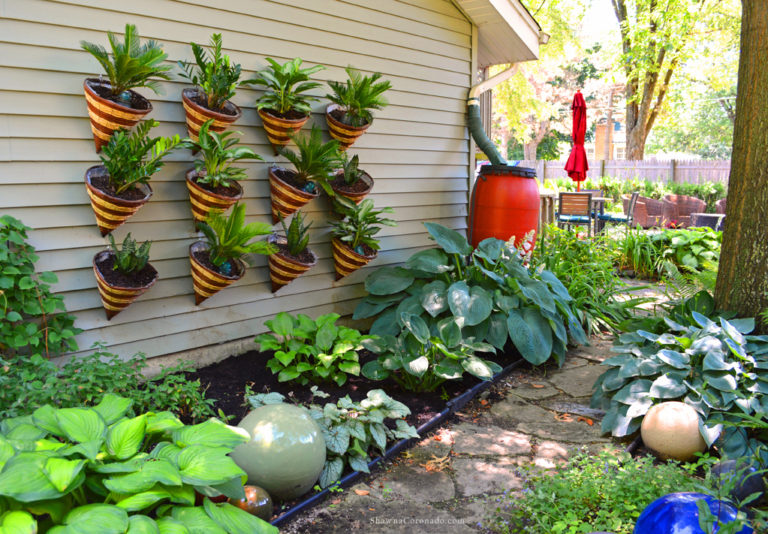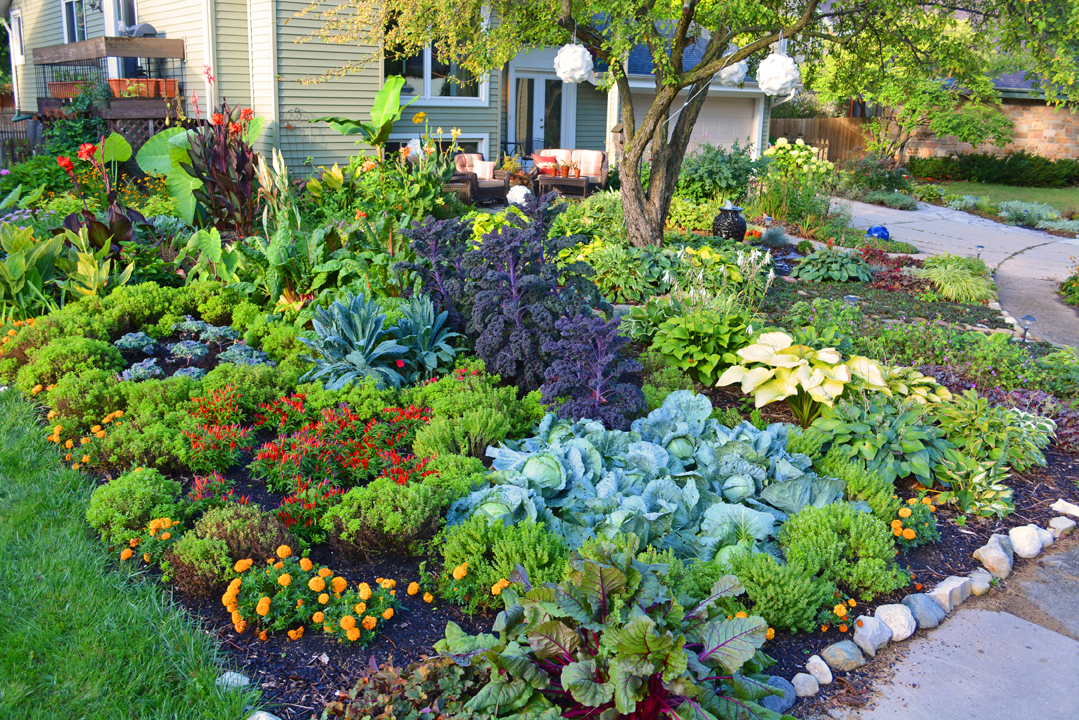Indoor Vegetable Gardening Guide for Beginners
Indoor vegetable gardening for beginners? Yep. While growing outdoors is the classic way to grow, you can grow inside. Particularly if you have a small space or live in an apartment you can grow an herb or vegetable garden inside your home. In fact, this type of growth can help you have fresher more nutritious food at your fingertips all season – winter and summer.
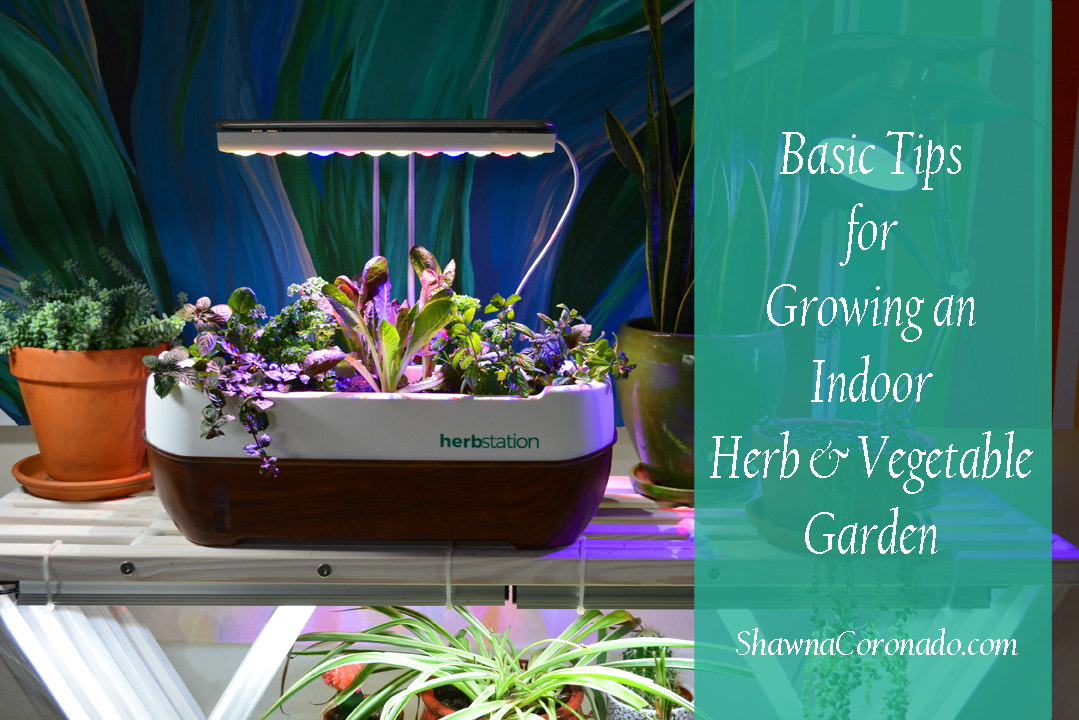
Grow plants indoors with the tips in the guide below. It is possible to grow all year long inside your home and provide a bit of food security for your family and community.
Lighting and Temperature Tips for Indoor Vegetable Gardening
One great secret to success is having the appropriate light when growing any plant. There are two types of light within your home; sunlight exposure from windows and artificial lighting. While the ambient light from a kitchen window will work for most plants that have low light requirements, it will simply not be adequate for plants that require higher light intensity.
Rule of thumb; if you do not have southern facing windows, definitely consider artificial lighting, also known as “grow lights”. Even though I have southern-facing windows, I use grow lights for further reinforcement and better growth.
Temperatures for Indoor Growing
Temperatures for indoor gardening, particularly for vegetables, should range from 65°F -75°F. This is important as central air conditioning or heating can definitely affect your plants by drying them out or harming them. Placing your plants in front of a southern facing window that also exposes the plant to freezing temperatures in a cold room can kill your plants.
Therefore, having consistent temperatures inside can encourage positive growing responses from your plants. Keeping them comfortable is important.
What Type of Lights Should You Use for Indoor Vegetable Gardening?
The goal of lighting indoor vegetable gardens is to adequately address the plant’s required photosynthesis needs. Shop lights and common light bulbs are not the most effective choice as you cannot consistently broadcast the appropriate light output as the plants require. I prefer “LED GROW LAMPS” for all of my indoor gardens as they use reduced electricity. LED lamps to come in low-output and high-output types. Because they have less heat and produce more light, LED lamps can be used without fear of burning your plants.
Placing lights closer to plants will increase their exposure. Basil, for example, prefers high sun volume and will produce better indoors with stronger lighting. Leafy greens such as lettuce will grow well with outdoor shade conditions, but indoor lower light conditions. Lettuces can have a light source farther away from the leaves. Choosing what lighting you use and where you position your lighting above your plants depends on the plant’s sun requirements.
Most seedlings and plants require between 14 and 18 hours of sunlight every day from a low-output LED light source. Fruiting edibles will require 14 to 18 hours of high-output lamplight. Place your lighting on a timer and there is no need to turn the lights on and off manually. Keep seedlings and young plants very close to the light source, but as they grow, they can be moved farther from the light source.

List of Grow Lights and Stands for Indoor Growing
Below is a list of the grow lights and stands that I recommend for all types of indoor vegetable gardening. It is possible to use the lights alone and attach them to various furniture within the home and office so that the plants can be hidden in nooks and crannies and still receive adequate light.
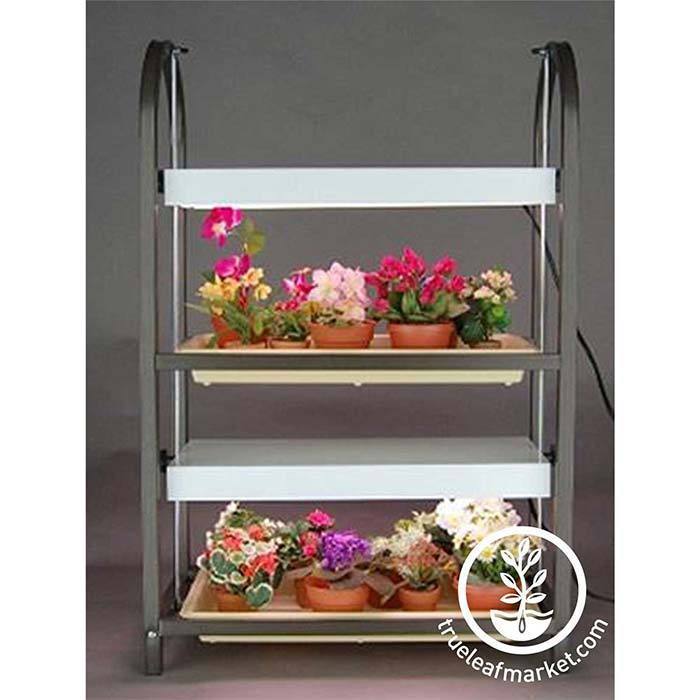
- Growing Rack with Lights – This unit from True Leaf will hold two trays of microgreens, wheatgrass, or vegetables and comes in two colors.
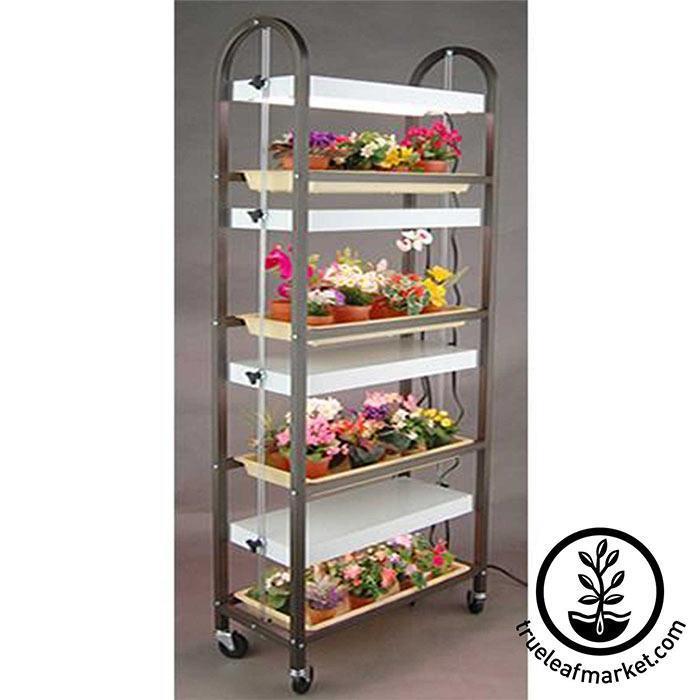
- Tall Growing Rack with Lights – A four tray tall growing rack that will hold four trays of microgreens, herbs or vegetables.
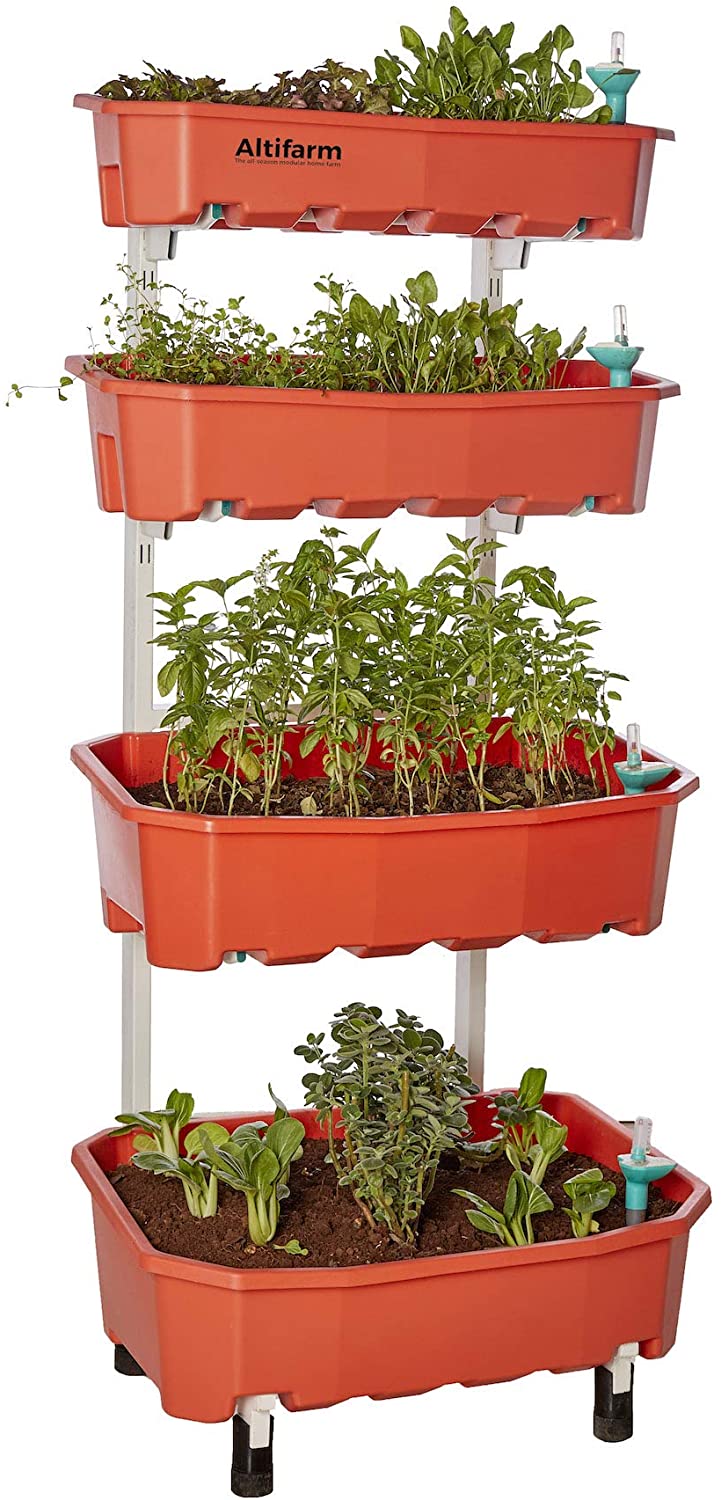
- Altifarm Home Farm Vertical Garden – Raised vertical self-watering indoor or outdoor garden unit for herbs and vegetables (my favorite for having an “indoor kitchen garden” immediately next to my kitchen area). You can order your Altifarm with the Altifarm 3-Tier or 4-tier combo option which includes lights.
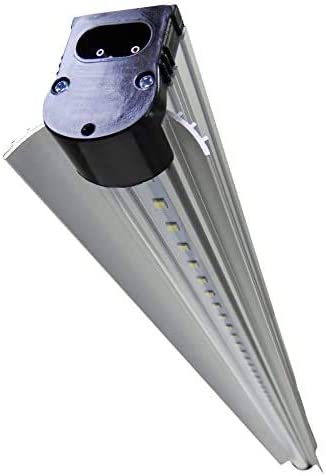
- High Output Individual LED Strip Lights – Individual 48” lights for hanging above herbs and vegetables and for seed starting. Link up to 8 units.
- Jumpstart LED Single Light Fixture – Individual 18” T5 lights for hanging above a tray of plants. Built in timer for scheduling lights on and off is included.
If you would like to have more in-depth information on grow lights and how they work, I highly recommend you get the book Gardening Under Lights: The Complete Guide for Indoor Growers, written by Leslie F. Halleck. It is an essential guide to lighting with extensive indoor vegetable and herb gardening instructions.
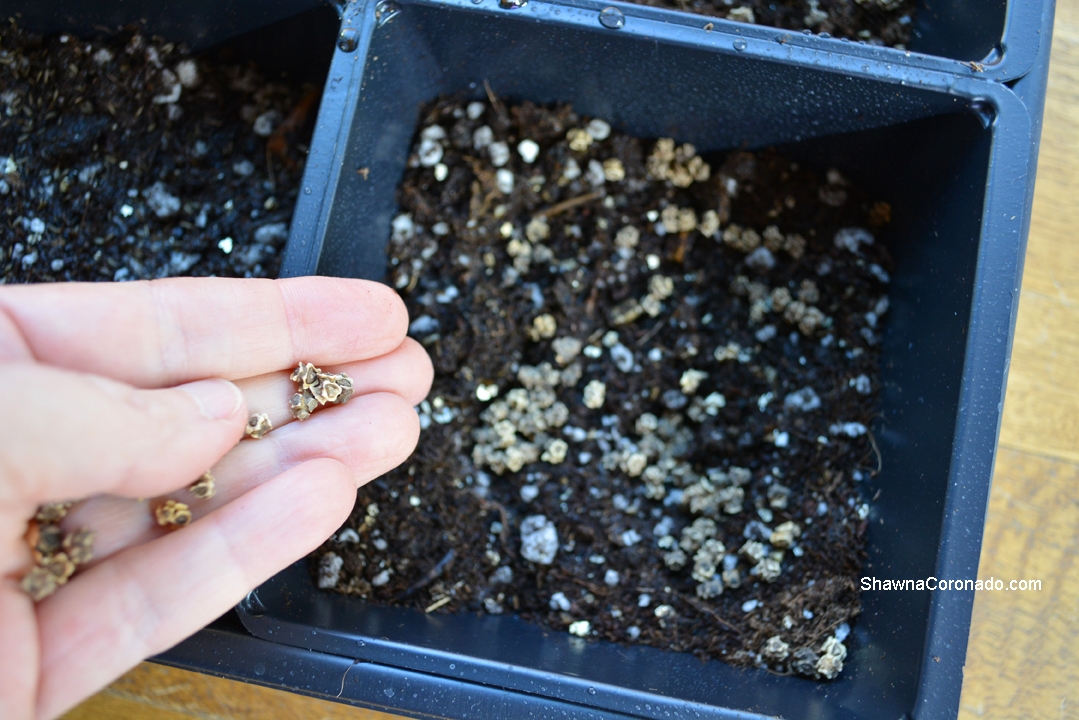
What Type of Growing Medium to Use for Indoor Vegetable Gardening
Growing medium is the product that you plant the roots of your plants in. Whatever container you choose to grow your plants in, the roots of the plant must sit in a soil medium. Containers much have holes for drainage so that the moisture can run off the growing medium and not remain soggy. Types of growing mediums include soil or soilless mixes of all sorts that might be suitable to grow plants. Common mediums may comprise organic potting soil, vermiculite, gravel, coco coir, or peat moss.
In my own indoor garden, I prefer an organic potting soil mix for my indoor vegetable gardens. You can see a few plants below in my Herbstation, that have been planted with organic potting soil. I sometimes utilize a soilless mix for seed starting, but always return to an organic potting mix of some kind to support the roots of the plants well. It is important to water regularly, but for the growing medium to dry out in between waterings unless you are growing hydroponically.
Fertilizer is an important addition to soil management. It is important that you do not over-fertilize or you will burn the plants. Natural or organic liquid fertilizers at one quarter to one-third strength can be utilized to feed seedlings weekly. Of course, fruiting plants may require additional fertilizer.
Jobes Organics Vegetable and Tomato Fertilizer are what I have used this season in both my indoor and outdoor gardens.
Best List of Herbs and Vegetables to Grow Indoors
- Arugula
- Basil
- Beans
- Beet greens
- Bok Choy
- Carrots
- Celery
- Citrus trees such as dwarf varieties
- Collards
- Corn mache
- Cucumbers
- Endive
- Kale
- Lettuces
- Leafy herbs such as basil, cilantro, mint, parsley
- Malabar spinach
- Microgreens
- Mushrooms
- Mustard greens
- Peas
- Radishes
- Rosemary
- Rhubarb
- Scallions
- Spinach
- Squash – vining
- Strawberry
- Swiss chard
- Tomatoes – miniature or petite varieties are best
- Turnip greens
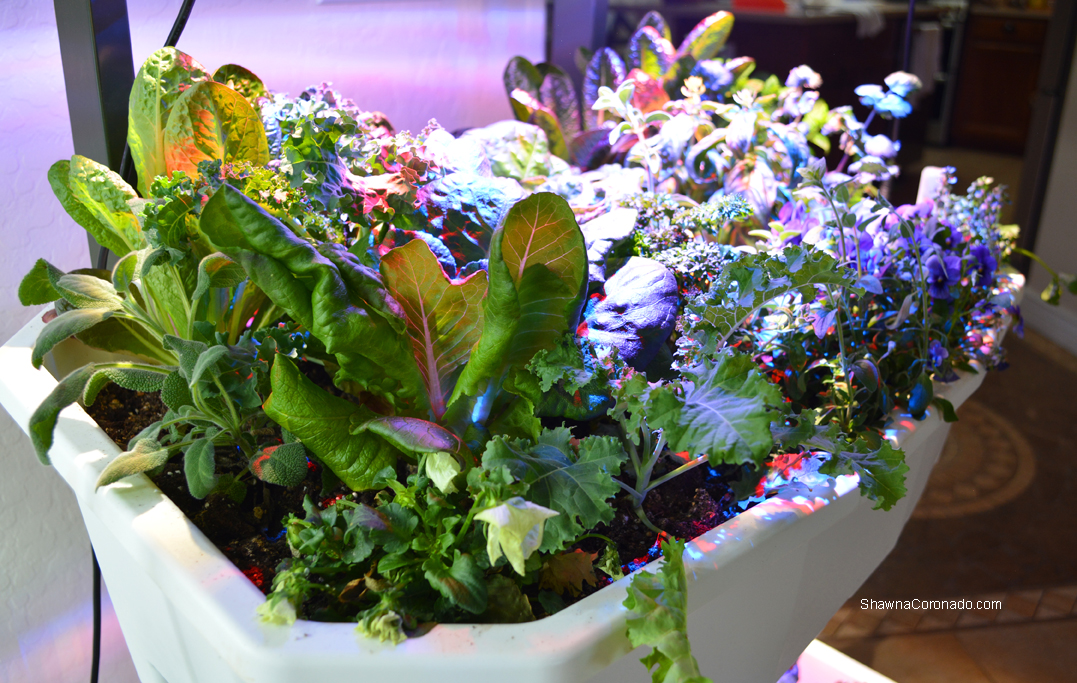
How to Water and Manage the Indoor Herb and Vegetable Garden
Managing the indoor garden means paying attention every day to your plants until you get the hang of caring for them. In my indoor garden, I water microgreen within their trays every day, but I water larger plants only once per week. Understanding each plant’s needs and addressing them will be part of the trick of growing healthy indoor vegetable plants.

Humidity
Humidity can be an issue for indoor houseplants. Winter-heated homes, for instance, have exceptionally low humidity. Increasing humidity by setting your plants on a dish of pebbles, then keeping the pebbles watered, or misting your plants regularly with a continuous mist spray bottle can help.
Too much humidity, soil moisture, or misting can result in unwelcome mold growth. That mold growth is bad for the plants and can cause damping off. Too much mold is also bad for humans in the household and can cause breathing issues. Letting the planting medium dry off between waterings is important to prevent mold concerns.
Air Circulation
Keeping the air circulating around the plans can reduce negative moisture issues and assist with pollination. Running an oscillating electric fan a few hours per day is a good idea.
Gnats
When indoor vegetable gardening, the only predominantly negative issue has been gnat growth. This is easily combatted with the smart placement of sticky yellow gnat trap sheets. The sheets are a smart non-toxic way to control gnats.
Harvesting
Many microgreens and other leafy greens are “cut and come again”. That means, you can cut the top off the plant and it will regrow for a second, third, or sometimes the fourth harvest from the same plant. This saves money.
There is something particularly joyous about being able to save a few pennies and harvesting from the same plant base over and over from your indoor vegetable garden.
